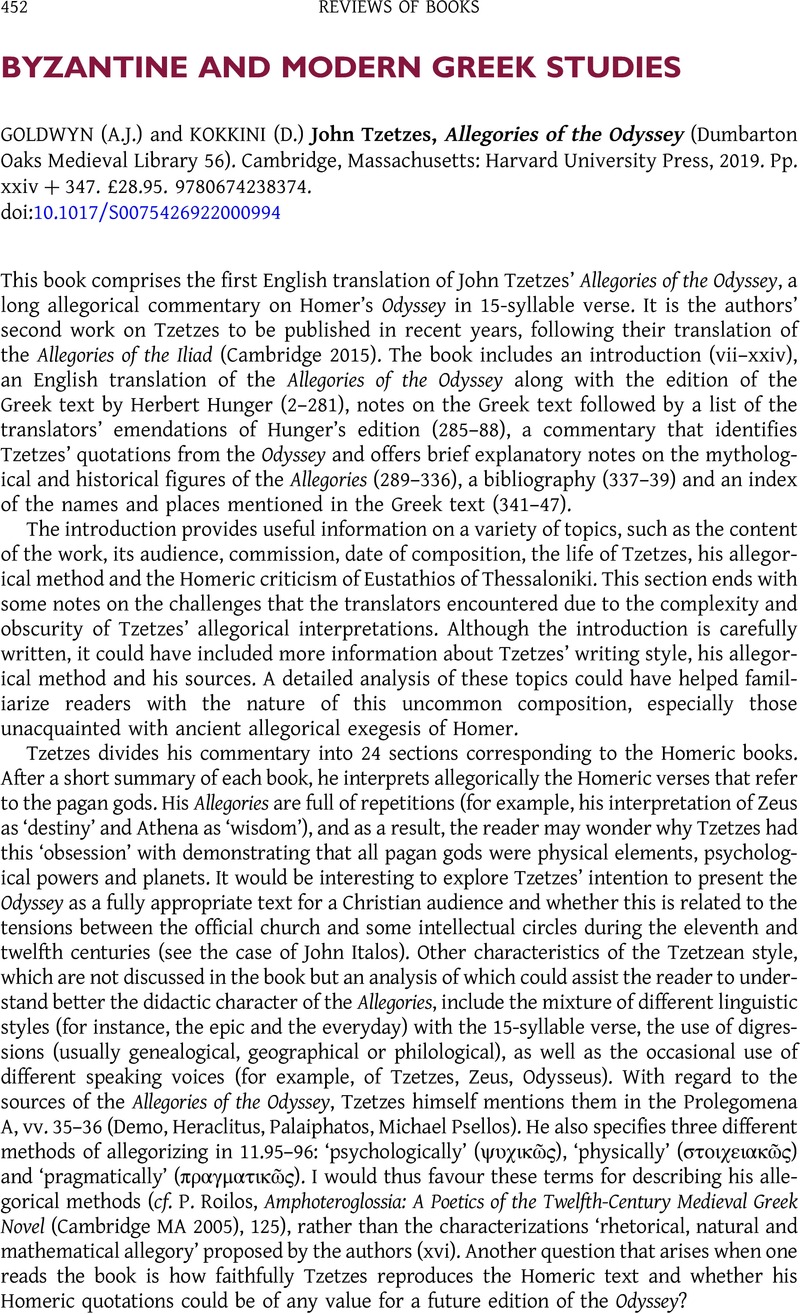No CrossRef data available.
Article contents
(A.J.) GOLDWYN and (D.) KOKKINI John Tzetzes, Allegories of the Odyssey (Dumbarton Oaks Medieval Library 56). Cambridge, Massachusetts: Harvard University Press, 2019. Pp. xxiv + 347. £28.95. 9780674238374.
Review products
(A.J.) GOLDWYN and (D.) KOKKINI John Tzetzes, Allegories of the Odyssey (Dumbarton Oaks Medieval Library 56). Cambridge, Massachusetts: Harvard University Press, 2019. Pp. xxiv + 347. £28.95. 9780674238374.
Part of:
Byzantine and modern Greek studies
Published online by Cambridge University Press: 11 April 2023
Abstract
An abstract is not available for this content so a preview has been provided. Please use the Get access link above for information on how to access this content.

Information
- Type
- Reviews of Books: Byzantine and Modern Greek Studies
- Information
- Copyright
- © The Author(s), 2023. Published by Cambridge University Press on behalf of the Society for the Promotion of Hellenic Studies

